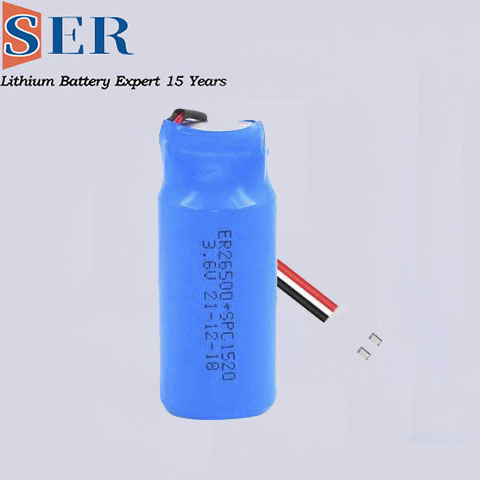Primary Lisocl2 Lithium Batteries Bobbin Battery ER34615 with Super High Pulse Capacitors SPC1550 pulse current 5A ER34615 SPC1550 battery pack
Primary Lisocl2 Lithium Batteries Bobbin Battery ER34615 with Super High Pulse Capacitors SPC1550 pulse current 5A ER34615 SPC1550 battery pack
Primary Lithium Batteries, specifically focusing on the ER34615 Bobbin Battery in conjunction with Super High Pulse Capacitors (SPC1550) capable of delivering a pulse current of 5A, requires a detailed exploration of various technical aspects, applications, safety considerations, and future trends in this field. While a full-length article cannot be fully rendered here due to space constraints, I will outline a structured approach to cover the topic, providing key points and sections that could be expanded upon.

Title:
Unlocking the Power of ER34615 Primary Lithium Batteries with SPC1550 Super High Pulse Capacitors: Advancements in High-Pulse Applications
Abstract:
This article delves into the realm of advanced energy storage solutions, highlighting the synergy between Primary Lithium Batteries, exemplified by the ER34615 Bobbin Battery, and Super High Pulse Capacitors (SPC1550). We explore the unique characteristics of these technologies, their combined capabilities in delivering high pulse currents up to 5A, and their applications across diverse industries ranging from medical devices to security systems. Furthermore, we discuss safety protocols, design considerations, and future developments that promise to revolutionize the landscape of portable and high-demand power sources.
Introduction
Background on Primary Lithium Batteries: Start by defining primary lithium batteries, emphasizing their non-rechargeable nature, high energy density, long shelf life, and low self-discharge rates.
Introduction to ER34615 Bobbin Battery: Detail the specific features of the ER34615, including its cylindrical shape, voltage output, capacity range, and common use cases.
The Need for High Pulse Currents: Explain why certain applications require batteries capable of delivering short bursts of high current, such as RFID tags, sensors, and emergency backup systems.
Super High Pulse Capacitors (SPC1550)
Capacitor Fundamentals: Provide a brief overview of capacitors, emphasizing their role in energy storage and their ability to provide instantaneous power.
SPC1550 Characteristics: Detail the specifications of the SPC1550, focusing on its high pulse current capability (5A), capacitance range, voltage rating, and how it complements the ER34615 battery in terms of power delivery.
Hybrid Power Solutions: Discuss how combining SPC1550 capacitors with ER34615 batteries creates a hybrid power source capable of meeting both continuous and high-pulse power demands.
Applications of ER34615 + SPC1550 Hybrid Power Systems
Medical Devices: Explain how these hybrid systems are crucial in portable medical equipment like defibrillators, glucose monitors, and implantable medical devices that require reliable and instantaneous power.
Security & Surveillance: Highlight their use in security cameras, alarms, and RFID-based access control systems, where instant power spikes are essential for optimal performance.
Industrial Automation: Discuss applications in automation systems, where sensors and actuators rely on high-pulse currents for precise timing and operation.
Consumer Electronics: Explore the potential of these hybrid power solutions in enhancing the performance of wearable devices, smart home gadgets, and remote controls.
Emergency & Military: Emphasize their importance in emergency response equipment and military applications where reliability and durability under extreme conditions are paramount.
Design Considerations & Safety Protocols
Circuit Design: Discuss the optimal circuit design for integrating ER34615 batteries with SPC1550 capacitors, ensuring efficient power transfer and preventing damage to either component.
Thermal Management: Explain the importance of thermal management in these systems, particularly during high-pulse events, to prevent overheating and ensure long-term reliability.
Safety Features: Detail safety mechanisms, such as over-current protection, reverse polarity protection, and temperature sensors, that should be incorporated into hybrid power designs.
Compliance & Standards: Outline relevant international standards and regulations governing the design, manufacture, and disposal of these batteries and capacitors.
Challenges & Limitations
Cost: Discuss the relatively higher cost of SPC1550 capacitors compared to traditional capacitors, and how this affects the overall cost of hybrid power systems.
Size & Weight: Acknowledge the trade-off between energy density and size/weight, particularly in portable devices where space is limited.
Lifespan: Compare the lifespan of ER34615 batteries (limited by chemical reactions) to SPC1550 capacitors, which can undergo many charge/discharge cycles.
Future Developments
Technological Advances: Explore emerging technologies that could enhance the performance of primary lithium batteries and supercapacitors, such as advanced materials, nanostructuring, and novel electrolyte formulations.
Integration with Renewable Energy: Discuss how hybrid power systems incorporating ER34615 batteries and SPC1550 capacitors could be integrated with renewable energy sources for more sustainable and resilient power solutions.
Smart Power Management Systems: Envision future systems that incorporate AI and machine learning for optimized power allocation, maximizing the efficiency and lifespan of hybrid power systems.
Conclusion
Summarize the key findings and implications of combining ER34615 Primary Lithium Batteries with SPC1550 Super High Pulse Capacitors. Emphasize their unique value proposition in high-pulse applications and the potential for further advancements in this field. Urge readers to consider the broader implications of these technologies for sustainable energy storage and portable power solutions.





